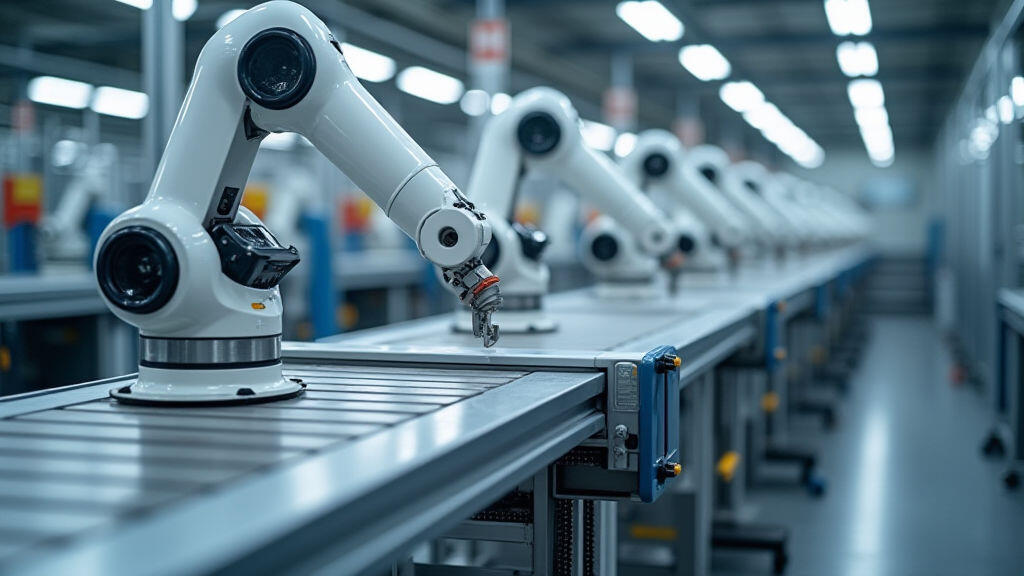Anjing Road, Xiaolan, Zhongshan, Guangdong, China
info@mes-drive.com
08.00 AM-09.00 PM

Variable Frequency Drive (VFD) motors have quietly transformed the way medical equipment is manufactured, turning precision, flexibility, and sustainability into standard features of production lines worldwide. While most people associate VFDs with power tools or HVAC systems, their impact on the highly regulated world of medical devices is both profound and growing.

A VFD is a type of AC motor controller that adjusts the frequency and voltage supplied to an electric motor. By doing so, it changes the motor's speed and torque output in a smooth, controllable manner. Unlike older, fixed-speed drives that required mechanical gearboxes or clutches, VFDs employ power electronics and microcontrollers to produce virtually any speed profile demanded by the application.
The three key benefits of VFDs for manufacturing are:
Medical equipment ranges from simple infusion pumps to complex imaging systems, but every product shares a few stringent requirements: accuracy, repeatability, and compliance with safety standards. The manufacturing processes that build these devices often involve pick‑and‑place robots, CNC machining, and high‑speed conveyors. VFDs give each of these stages the precision and control needed to achieve the necessary quality.
Consider the production of a next‑generation insulin pump. The assembly of its miniature motorized pump requires repetitive, high‑accuracy positioning. A VFD allows the robot arm to slow to micro‑scale speeds at the moment of placement, thereby reducing positioning error from a fraction of a millimeter to virtually none. This translates to fewer rejects and tighter tolerances.
Sterile cleanrooms demand equipment that never introduces contaminants. The soft starts and stops enabled by VFDs reduce the production of airborne particles and vibrational noise, making it easier to maintain the required haze level within the cleanroom environment.
Modern VFDs can monitor motor temperature, current, and vibration in real time. By integrating these data into an intelligent factory system, manufacturers can predict when a belt will slip or a bearing will fail. In the medical field—where downtime can delay life‑saving devices—this early warning system is invaluable.
Intelligent manufacturing, often referred to as Industry 4.0, combines cyber-physical systems, IoT, and advanced analytics to optimize production. VFDs serve as the low‑level execution engine in this ecosystem.
A leading manufacturer of portable ultrasound machines recently upgraded its plant with VFD‑controlled roll‑stages and CNC routers. By integrating motion control with a production‑line analytics platform, they achieved a 25 % reduction in cycle time and cut energy consumption by 18 %. Most importantly, the improved process control lowered the defect rate from 3.4 % to less than 0.5 %, a critical improvement for a product used in time‑sensitive emergency scenarios.

Beyond process improvements, VFDs significantly contribute to a greener manufacturing footprint. In 2024, the medical device industry faced growing pressure from regulators and consumers to reduce greenhouse gas emissions. A typical VFD can reduce motor energy use by up to 30 % compared with constant‑speed motors, translating into lower CO₂ emissions across the entire production line.
Moreover, VFDs help meet the Energy Star and LEED certification criteria commonly sought by manufacturers. By regulating motor speed to match real demand rather than running at full capacity all the time, factories can track and report meaningful sustainability metrics.
The next wave of innovation will blend VFD technology with advanced motor design—including permanent‑magnet synchronous motors (PMSMs) and switched‑mode power supplies. These integrated solutions will offer even finer control over torque ripple and resonance, essential for processing delicate, high‑precision components such as implantable drug delivery devices.
Further, AI‑driven predictive control will allow factories to automatically tune VFD parameters in real time, reacting instantly to supply chain disruptions or sudden changes in product specifications. When combined with edge computing, this will deliver “zero‑trust” manufacturing environments where cyber‑security is baked into every motion.
Variable Frequency Drives are the quiet workhorses at the heart of modern medical device production. Their ability to fine‑tune speed, reduce energy use, and lower mechanical wear aligns perfectly with the industry’s demands for precision, reliability, and sustainability. As intelligent manufacturing continues to evolve, VFDs will remain indispensable, now and into the future, acting as the bridge between human ingenuity and machine excellence.
Embracing VFD technology not only boosts operational efficiency but also reinforces a manufacturer’s commitment to quality and environmental stewardship—a synergy that is essential as healthcare innovations look to scale while keeping both patients and the planet safe.
Leave A Reply
Your email address will not be published. Required fiels are marked